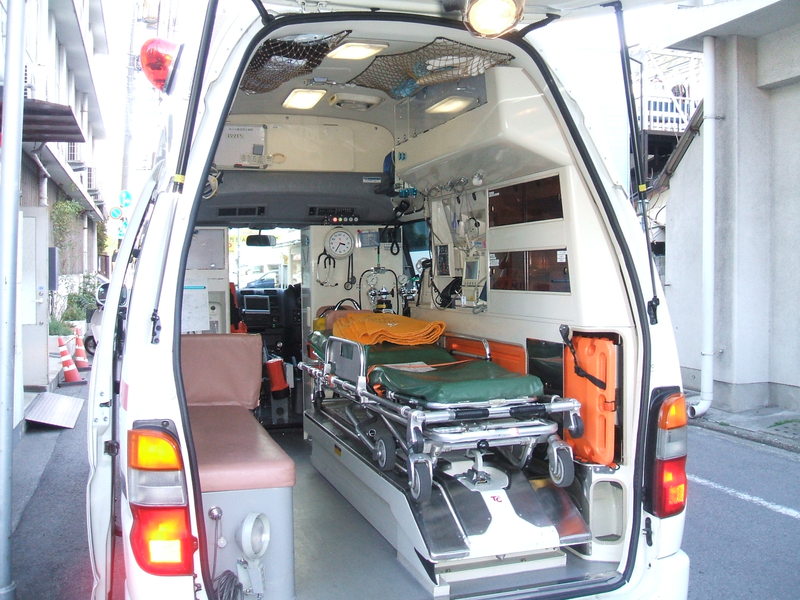I had seen the inside of an ambulance in the US about 20 years ago. I was surprised to know that the equipment was good and sophisticated. Though the Japanese ambulance crews were barred from practicing medicine by the Doctor's Law at that time, the American crews could do some technical procedures; endotracheal intubation, electrical countershock, insertion of an intravenous line,,,. These treatments were allowed for the doctors only in Japan at that time. Needless to say, the first aid at the scene is the key to whether the critical patient can survive or not. For such a reason, the Law Concerning Emergency Lifeguard was issued about 15 years ago. By this law, the emergency lifeguards were allowed to do some treatments and their role is getting more important now. Consequently the ambulance is fully equiped for first aid. The photo shows the ambulance just before going back to the fire department after moving the patient into the emergency care unit.
(Vocabulary)
bar 〈人〉 を締め出す, 除外する
bar somebody from (doing) something
<人>が<…>(すること)を妨げる[禁じる]


Thank you for the comment.
If you don't mind, please tell me more about your office.
Doesn't your office have a website?
Posted by: KUMO | May 07, 2009 at 12:47 PM
I am a paramedic in the United States, just to give you an update, as of 2009 the latest and most advanced skills performed by paramedics includes but is not limited too, starting intravenous access, starting intraosseous acces, electrical cardioversion/pacing, endotracheal intubation, surgical crycothyrotomy, pericardial centesis (spelling?)
Posted by: Lee | May 07, 2009 at 12:38 PM